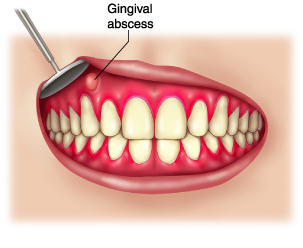If you haven’t experienced it, you might find yourself cringing when you hear the words, “You might need a root canal.” As scary as that may sound, maybe knowing why it’s needed and how it’s done can settle your nerves. Pun definitely intended!
Root canal therapy is a generally a restorative process to treat a tooth with an infection within the pulp cavity. The pulp cavity contains blood vessels and nerves, and is located beyond the enamel and dentin of the tooth. Because the pulp cavity is an underlying tissue of the tooth, infections in this area are secondary in nature and often caused by some other means.
 So what causes a pulp infection then?
So what causes a pulp infection then?
Pulp infections can arise for many reasons ranging from prolonged decay from cavities left untreated to physical trauma to the tooth. You may be wondering how these things can lead to a root canal, so let’s go through the process.
Your mouth can be filled with up to millions of bacteria that are fed every time you put food in your mouth. One harmful strain known as streptococcus mutans feeds on the sugary and starchy foods you eat. As a byproduct of their digestion, these bacteria produce enamel-eroding acids which breaks down your enamel. Over time with oral neglect and poor hygiene, these acids produce microscopic holes in your teeth protruding beyond the enamel and into the dentin until it reaches the pulp cavity leading to a pulp infection.
Physical Trauma can also lead to a pulp infection if the tooth becomes fractured or cracked. Hopefully this never happens to you, but if you were to fall and landed on your tooth there is a chance that the tooth could have a microscopic crack which isn’t visible to the naked eye. Initial pain may be experienced and the pain may go away, but if the tooth is indeed cracked, it allows bacteria to travel down there, eroding the tooth until an infection has reached the pulp. Rest assured that this is just a hypothetical example, because there are many reasons that could lead to a pulp infections, that is why it is important to schedule routine check-ups with your dentist.
So how do I know I need a root canal?
Your best bet and our recommendation for finding out if you need a root canal is going to your dentist for an examination. If you are trying to self-diagnose, you can read the following list of common symptoms, but just know you might be making yourself even more anxious.
 Common symptoms for a root canal include:
Common symptoms for a root canal include:
- Severe toothache when chewing or applying pressure on the tooth
- Prolonged sensitivity (more than a few minutes time) to temperature
- Swelling and tenderness of the gum tissues
- A “pimple,” or abscess on the gum that contains blood or pus when popped
Now that you are granted with this dental education, if you are experiencing any of these symptoms contact your dentist to schedule an appointment for a diagnostic exam.
Other Reasons for a Root Canal
Though pulp infections are common reasons for a root canal, did you know there could be other reasons for the treatment?

These other reasons may include a non-vital tooth, or even a failed root canal. A non-vital tooth exists when physical trauma has caused the nerve of the tooth to die by bursting the blood vessels or cutting off blood supply to that tooth. Over time the tooth may take on a darker appearance, and an infection in the area may lead to heightened pain. If left untreated, the tooth could fall out, or develop an infection that leads to bad taste, smell, or gum abscession.
If you have had a root canal on a tooth before, and find an abscess where the root canal treated tooth is located, there is a chance that the root canal treated tooth has an infection. As alarming as it is, rest assured that it is this could be an easy fix by visiting your dentist or endodontist to have the infection removed and tooth retreated.